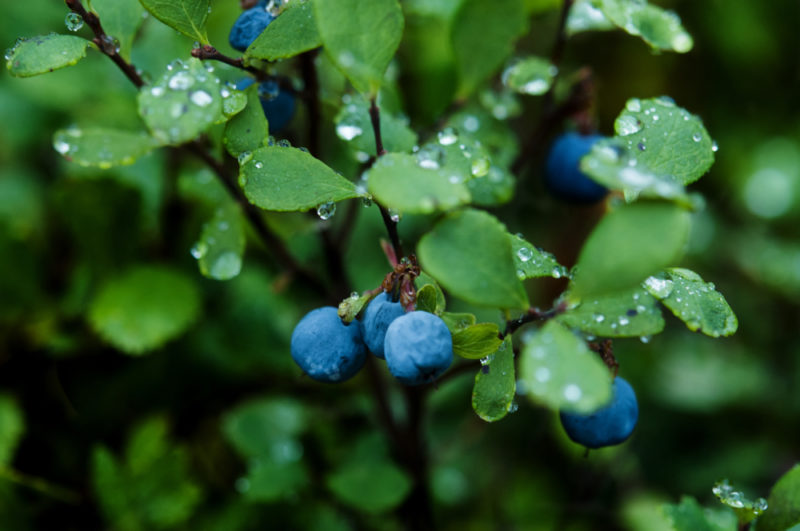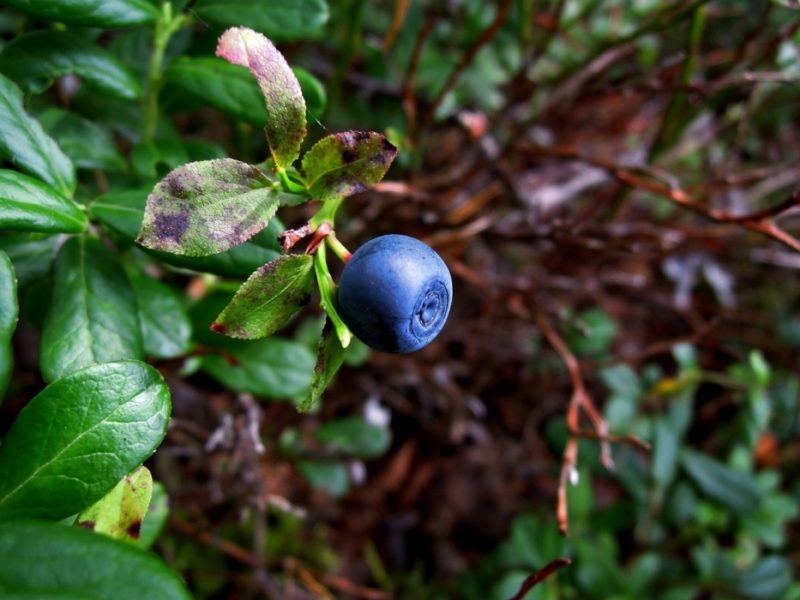Common blueberries grow in the northern regions. In culture, this plant can also be grown if certain conditions are created for it.
Material Content:
Botanical Description
Blueberry (vaccinium uliginosum) is a shrub that biologists refer to the vast genus Vereskovy family vaccinium. This also includes lingonberries and cranberries, blueberries.
The plant is distinguished by fibrous roots. Shrub shoots are green, over time they become covered with bark. Blueberry leaves are small, hard, up to 3 cm in length. Their upper part is shiny due to a rather dense wax coating.
A bush of blueberries can reach a height of 1 meter, some varieties of plants grow up to 2 meters. Brief description of the plant: deciduous shrub, high-yielding, resistant to disease. Still ordinary blueberry is called swamp or marsh.
Blueberry fruits - berries reaching 12 mm. On average, each weight is about 10 g. In culture, you can remove up to 10 kg of berries from the bush.
Variety variety
Today, many varieties are developed specifically for cultivation in personal plots:
- Early ripening. The first crop from early ripening species can be harvested in July. These include Duke, Spartan, the high-yielding Stanley, Northble, and Bluetta.
- Mid-season. These varieties will please the fruits at the end of July. This is “Toro”, “Elizabeth”, “Nelson”, unpretentious “Rankocas”, “Bluegold”.
- Late ripening. At the end of summer, the varieties Eliot and Herbert begin to bear fruit.
The choice of varieties and species depends on the climate of the region. In the middle lane, it is recommended to grow early ripe and mid-ripe species, since late ripe blueberries do not have time to ripen.
The nuances of growing ordinary blueberries
Blueberry cultivation begins with a competent choice of a site on a personal plot for planting. It must be in the sun, although openwork partial shade is also acceptable. It is important that there is no occurrence of groundwater in the selected area. It is also desirable that the site be well protected from drafts.
Culture is planted in the spring or in the autumn months. But still landing in spring is preferable. Over the summer, the plant will have time to take root well and gain strength in order to survive the winter frosts.
If we talk about crop preferences over soil, then blueberries love sandy or peaty soil with a slightly acid reaction.
Plants with closed roots are suitable for planting. This culture has a very fragile root system, and it needs to be planted together with a lump of earth. First, the container is lowered into the water for 20 minutes, and then a lump is taken out and the plant is transferred to the prepared hole.
Blueberries grow very poorly in areas after vegetable and berry crops. It is advisable that the site for its landing be kept unseeded for at least a couple of years. Before planting, the soil is dug and organic matter is introduced. This is done in the fall.
How to care for culture
Nothing special care for blueberry bushes is no different. Culture needs timely watering, fertilizers, pruning.
Loosen the earth around a shrub only two to three times per season. This should be done very carefully, since the roots of the plant are close to the surface. Bushes must be mulched to reduce evaporation of moisture. Loosen the soil without removing the layer of mulch.
Blueberries need strictly calibrated watering. Water should not stand near the roots. But also a lack of moisture adversely affects the growth of bushes and fruiting. One watering of blueberries is the consumption of one bucket of water in the early morning and one more already at sunset. Watered only twice a week.
The plant is completely undemanding to the soil, but the use of mineral top dressing will be useful. Fertilize in early spring. Blueberries best absorb zinc sulfate and potassium.
To get a harvest from the bushes every season, you need to learn how to prune them correctly. In the spring, a sanitary haircut is made, the purpose of which is the removal of weak shoots. It is performed as soon as the kidneys swell. The procedure begins to be carried out when the bushes reach the age of two.
When forming pruning on the bush leave the 5 strongest branches. From the age of five it is also necessary to shoot shoots older than 5 years.
It is recommended on young bushes in the first season to cut off all the flowers so that the plant can grow stronger.
Breeding methods
This branchy shrub is easily propagated by shoots. To do this, heavily trim it, make a double dose of mineral fertilizers and cover it with a thick layer of sawdust. The young branches that the plant gives will take root in a couple of years. By this time it will be possible to remove sawdust, cut rooted branches and transplant them into containers. So blueberries should grow another 2 years. Only after this, young plants are planted in the ground.
A long process is the propagation of blueberries with root layers. To do this, bend the shoot and sprinkle with sawdust. Layers take root only after two or three years. By this time, it will be possible to separate the young plant and transplant.
How to protect from pests and diseases
To prevent the occurrence of diseases, in the spring, shrubs should be sprayed with Bordeaux liquid and polycarbacin. With the beginning of leaf growth and after picking berries, blueberries are treated with fungicide. The final spraying with this composition is carried out before freezing.
Blueberries in a culture can get cancer. The fungus causes the disease, it manifests itself in the appearance of brown spots on all parts of the plant. They will help to cope with the problem of spraying with Topsin and Euparen preparations.
Another fungus is gray rot. The disease can cover the entire bush, the symptoms of the problem are the appearance of reddish spots. Bordeaux liquid is used to combat fungus.
Blueberries also have viruses, but they are incurable. Sick plants will have to be destroyed.
Of parasitic insects, the most dangerous for blueberries are insects and aphids. In the fight against pests will have to use chemicals.
To collect the harvest of northern berries on your site, it is worth spending time and effort to grow this amazing plant - common blueberry.















